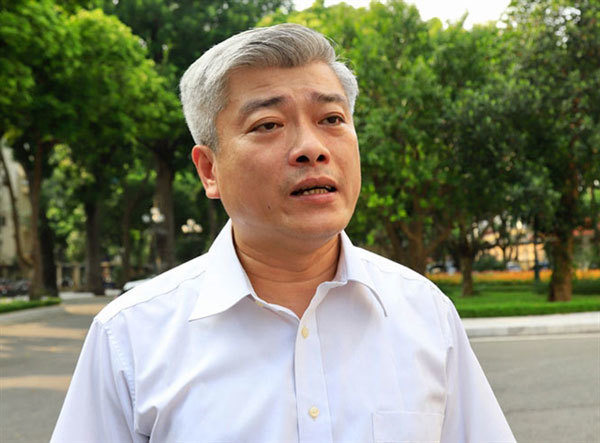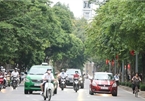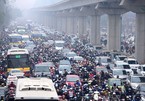 |
| Head of Hanoi’s Environment Protection Division under the city’s Department of Natural Resources and Environment Mai Trong Thai. Photo hanoimoi.com |
From September to March, air pollution is usually worse in Hanoi with increasing concentration of fine dust PM 2.5. Can you explain this phenomenon?
Weather conditions and pollution sources are two main factors that worsen Hanoi’s air from September to March.
Hanoi has a humid tropical monsoon climate, strongly influenced by monsoon mechanisms with the northeast monsoon in winter and southeast monsoon in summer. Its climate has high humidity almost all year round, the dry season is really short due to the influence of air flows from the East Sea.
In winter, Hanoi's climate is influenced by northeast monsoons, causing low temperatures, often inversions, creating stable meteorological conditions, detrimental to the dispersion of pollutants in the air.
From October to December, the air mass from continental high pressure is dominant, with relatively low temperature and humidity. From January to March, the high pressure moves gradually to the east, the air mass has to pass through the East Sea then spills back, causing fog, drizzle and high humidity, so the concentration of pollutants in the air is not diffuse.
Indicators of air quality in the city in the first days of last month show that the concentration of fine dust PM 2.5 is higher than those of previous months.
For example, between 5am to 10am of September 2 and September 9, the concentration of PM 2.5 in areas in the city increased by 155 – the level when air pollution harms people’s health.
Meanwhile, from May to August, air quality was usually at good and average level (from 7 to 90). Similar situations were seen in previous years with air quality worsening from September.
What are the other air pollution sources in Hanoi now?
We have identified 12 factors that cause air pollution in the city. Factors that relate to human activities include emission from vehicles, construction work, fossil fuels used in industrial production, outdoor straw/garbage burning and honeycomb charcoal stoves used in daily household cooking or food stalls.
Objective factors are those that relate to weather conditions including seasonal weather and heat inversion. The objective factors that don’t directly cause air pollution but affect the quality of the air are mentioned above.
What should people do on days with serious air pollution?
Hanoi has air quality monitoring stations which provide updated air quality information at moitruongthudo.vn, so people can visit the site to know about the air quality and recommendations/warnings from expert agencies.
For example, when indicators show orange or purple meaning air quality is bad or very bad quality, vulnerable groups like children and the elderly should not go out, especially in the morning. People with average health conditions should wear face masks when going out to avoid inhaling fine dust.
What are city authorities doing to improve air quality?
To improve air quality in the city, we are stepping up the installation and operation of air quality monitoring stations to provide information about current air quality and recommendations so people can actively respond.
On dry windless days, environmental companies will water streets to minimise the spread of fine dust and collect waste on major roads.
Construction works must strictly implement measures to minimise the dust discharged into the surrounding environment.
Authorities will continue calling for households and food stalls to stop using honeycomb charcoal stoves so that from next year, the stoves will be banned completely in the city.
In addition, the city is speeding up the implementation of European emission standards for vehicles, encouraging people to use public transportation, reducing personal vehicles and removing out-of-date vehicles whose emissions cause air pollution.
The city asked agencies and districts to review urban planning, pay more attention to green space and water surfaces. It is expected that such measures could help improve the city’s air quality. VNS/Hanoimoi

Hanoi and major cities see better air quality in May
The air quality of major Vietnamese cities in May was better than in previous months, with a significant improvement in the capital of Hanoi, according to the Ministry of Natural Resources and Environment.

Hanoians worried as air quality has become poor year-round
The air quality in the last six days of November was poor, with the index exceeding the permitted levels.